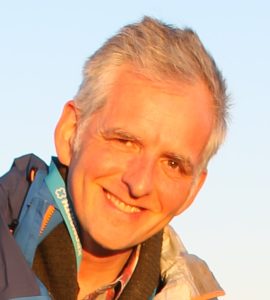 Alistair Appleby is a GP for the Highland Health Board, and Honorary Senior Clinical Lecturer at the University of Aberdeen. He is on X: @DrAlAppleby
Alistair Appleby is a GP for the Highland Health Board, and Honorary Senior Clinical Lecturer at the University of Aberdeen. He is on X: @DrAlAppleby
“Are you saying this is all in my mind, doctor?” In my experience this is a common and difficult to navigate scenario in medical consultations. It can be a serious hindrance to progress in disorders which have both physical and emotional or cognitive aspects. How patients imagine their bodies and minds and how we understand the relationship between them is crucial to our practice. But, to frame the question in a rather simplistic way, how many parts does a human have? Just body, or body and mind. Are there other ‘parts’ or aspects of being human that deserve inclusion: spiritual, relational or cultural, for example? Is it better to think of patients as a body and a mind, or as a single entity that has both physical and conscious attributes?
If a single integrated model of personhood is correct, how do we understand the characteristically different properties of the hand – to grip and to carry, and the mind – to remember or imagine? Can we do this without once again separating mind and body in a way which is unhelpful to patient care and, perhaps, non-scientific? In this article I discuss the relationship between mind and body, and what this means for medicine, offering a critical realist perspective.
The brain is often described as the most complex system in the known universe, having 6 to 20 billion neurones, each with around one thousand connections. This is married, via neurological and hormonal pathways, to other organs and tissues which can respond to, modify and feed back in relation to these messages. In this nonlinear web of multidirectional communication there is an intricate non-verbal conversation which currently defies accurate measurement or categorisation, even with modern techniques.1 On an anatomical and empirical level it is difficult to argue that there is a body – mind separation or duality, that they function as, or indeed consist of, separate entities.
The mind – body split
Is it better to think of patients as a body and a mind, or as a single entity that has both physical and conscious attributes?
Some form of mind-body dualism is present in many cultures and historical eras. This dualism may reflect our lived experience: our thoughts are internal, personal and unobservable, whereas our bodies and actions are seen by others. A mind-body split is often implied in our medical service structure, for example the distinct specialities of neurology and psychiatry. As general practitioners we often observe that disorders of the body affect the mind and those of the mind affect the body. For example, erectile dysfunction may impact self-esteem and self-esteem may affect erectile dysfunction.2 Conditions like Parkinsons disease and MS have both physical and emotional aspects. Neurophysiological studies show that following a stroke both the ability to perform and the ability to imagine actions is impaired.3 Additionally, mental rehearsal of an action is thought to enhance the neurological pathways which facilitate its performance, and this is used extensively in sports coaching. This is powerful empirical evidence of intense mind-body relatedness or perhaps even unity.
Critical realism, a philosophical framework incorporating complexity science, is firmly nondualist: it proposes that a persuasive and practical model of persons, indeed of all reality, must include material and mental states in a single unified framework. It is easier to make this assertion than to explain in detail how this actually happens, and a science which logically tracks consciousness from a molecular level, through biochemical and neurophysiological processes seems a far distant horizon. In respect of a detailed uniting account of the physical and mental “We may not have begun to start to map out this mountain, at least we have noticed that it is there”.4 Pending this account, critical realism insists that a concept of persons cannot either omit physical or conscious aspects, nor allow one to engulf the other.
Difference without demarcation
For critical realists, the mind and body have distinct characteristics but are not separate. That there can be difference without demarcation is an important concept . The portion of the electromagnetic spectrum which is visible has distinctly different properties to the ultraviolet spectrum, but there is no hard boundary. Neither is there a clear demarcation between a city and the surrounding countryside, but the characteristics of these places are objectively different. Likewise, there may be no hard demarcation between our more basic neurological functions and those of the mind, but the novel properties that belong to more complex neurological structures confer profound differences.
A critical realism approach to mind – body
“ …for critical realists mind is an emergent power…three features are crucial here…the mind is unilaterally existentially dependant on the body… is taxonomically irreducible to body… and is causally efficacious.” 5
Ram Bhaskar, critical realism’s primary author, describes the mind firstly as a novel emergent property, i.e. a property of higher levels of complexity which are neither the attributes of, or predictable from, more basic chemical and physiological strata. Conscious mind is understood as an emergent property which is, nonetheless, dependant on the physical brain.
Secondly, that the properties of mind – consciousness and thought – cannot be reduced to a series of electrical impulses or synaptic events; that the mind cannot be understood as nothing more than a sophisticated machine. I would suggest that despite more advanced neurophysiological investigations, critical realism’s claim that “…physicalism has been unable to adequately account for consciousness itself as a total state of being” is likely to persist.6 As neuroscientist and psychiatrist Iain McGilchrist points out, emergence may be best thought of as something we inadvertently remove from the mind when we simplify it to its components.7
As doctors, if we are to avoid mind-body dualism what language do we use? The ‘mind-body unit?’
Thirdly, that the mind is something real, something that can “deliberate internally on what should be done”7 and is capable of generating actions which affect the material order. I have highlighted in a previous article how this fact, sometimes denied by physicalists such as Dennet, is actually a precondition for science.8
As doctors, if we are to avoid mind-body dualism what language do we use? The ‘mind-body unit?’ Does that again limit the possibility of other aspects of being human? Perhaps we need to insist on a ‘whole person’ designation? Might conscious and physical aspects of existence be encircled by a single more comprehensive framework? Critical realism remains open to the conscious mind being either an accident of nature, or ‘teleological’ – a likely or intentional destination of it.9
Whole person medicine
For the benefit of patients, we must move beyond the limitations of mind-body dualism to an integrated and holistic model. While we need to understand the clear distinctions between thinking and actions, inner perceptions and the physical world, this does not permit clear separation. Our patients are whole persons, both mind and body, material and conscious dimensions co-existing in an elusive yet indivisible relationship.
Every instance of human illness or wellness involves both body and mind, and we surely share the same view as critical realism: that an undivided person presents the only reasonable model for medical science.
References
- Elliott ML, Knodt AR, Ireland D, Morris ML, Poulton R, Ramrakha S, et al. What Is the Test-Retest Reliability of Common Task-Functional MRI Measures? New Empirical Evidence and a Meta-Analysis. Psychol Sci. 2020 Jul;31(7):792–806.
- Allen MS, Wood AM, Sheffield D. The Psychology of Erectile Dysfunction. Curr Dir Psychol Sci. 2023 Dec;32(6):487–93.
- Munzert J, Lorey B, Zentgraf K. Cognitive motor processes: The role of motor imagery in the study of motor representations. Brain Res Rev. 2009 May 1;60(2):306–26.
- Misselbrook D. Thinking About Medicine: An Introduction to the Philosophy of Healthcare. 1st edition. Boca Raton London New York: CRC Press; 2024. 336 p.
- Bhaskar R. The Order of Natural Necessity: A Kind of Introduction to Critical Realism. Createspace; 2017. 197 p.
- Hartwig M, editor. Dictionary of Critical Realism. 1st edition. London: Routledge; 2007. 560 p.
- Iain McGIlchrist. Re – Enchanting the Brain. (Spotify Open). Accessed 24/07/2024
- What makes science possible? – BJGP Life [Internet]. 2024 [cited 2024 Jul 22]. Available from: https://bjgplife.com/what-makes-science-possible/
- Collier A. Critical Realism: An Introduction to Roy Bhaskar’s Philosophy. London ; New York: Verso Books; 1994. 292 p.
Featured image by Iulia Mihailov on Unsplash







A brilliant article Alistair! “Is it better to think of patients as a body and a mind, or as a single entity that has both physical and conscious attributes?” encapsulates the whole issue in a single sentence.
Thankyou!